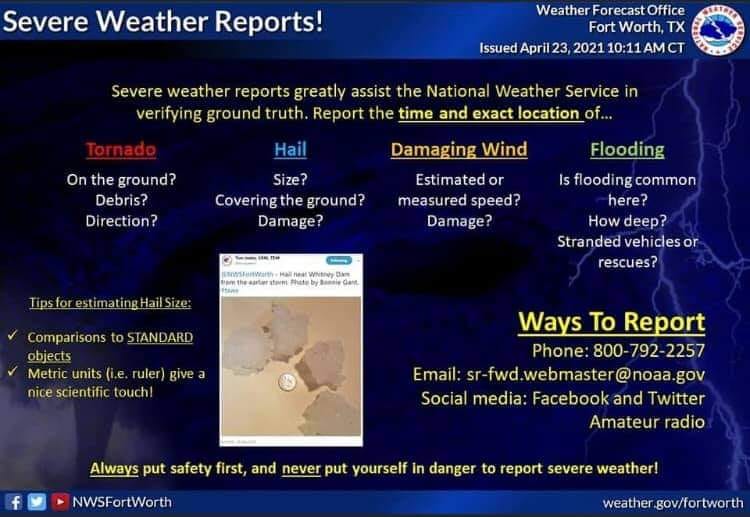
How to Make Weather reports
HAM radio is a fantastic hobby to break into. I’ve been active for a couple of years now and have thoroughly enjoyed my time in the hobby and look forward to continuing to grow as an amateur radio operator.
One of the greatest fulfilling things for me is working with Skywarn and the National Weather Service (NWS) to help protect North Central Texans when weather becomes dangerous. The NWS has astounding and extensive technology at their fingertips which helps them see deeper into supercells and underlying weather phenomena than ever before. However, there is one thing missing from what the technology can tell them: Ground Truth.
For weather spotters and storm chasers, ground truth means reporting what is actually happening. What they are able to observe and report. It could be rotation in the clouds, a non-rotating wall cloud, hail, downbursts, etc. All of this information helps confirm and provide a sanity check to what the radar and other measurements are telling the scientists.
A storm that has a radar indicated tornado is an alarming situation and should always be treated as a life threatening emergency. However, when hear the NWS say something like “…trained spotters have confirmed a large and dangerous tornado on the ground…”, it means a trained person is in a safe location and able to see a stable funnel cloud on the ground. Despite what the movies may say, spotters avoid dangerous situations by observing the storm from a safe distance and from a position that is not in the direct path of the storm. Often times, storm chasers are able to see the strong rotation in the wall clouds before tornadogenesis even occurs. This allows a greater and more accurate warning system which directly saves lives during a dangerous weather event.
So you want to get involved? GREAT! But first, a few things we should cover:
- Get trained first.
- This article is not training
- I don’t train weather spotters or storm chasers, the NWS does
- Don’t believe you know what you’re doing because you’re awesome. You’re not and you’ll be dead.
- What NOT to report
- It’s raining (rain, itself, is generally not dangerous. Flooding, which is caused by rain, may be)
- It’s thundering (not helpful)
- I see lightning (go inside, please. Also, while dangerous, not generally reportable)
- There’s some strong wind (What is strong? If it’s not measured or not damaging something you can see, it’s not reportable.)
- Really dark clouds (Not much anyone can do with that information)
- Good Reports (What, When, Where)
- There is approximately 8 inches of fast-moving water on the roadway at Main St. & Palo Pinto in Weatherford
- 3/4 inch hail was falling about 3 minutes ago in Annetta South just west of FM 5 and Bear Creek. (Hail is measured by the biggest measurement)
- I am 5 miles due south of the I-20/180 split in Hudson Oaks. I see a strongly rotating wall cloud in the large storm to my northwest. No funnel cloud and no debris visible.
- I am near mile marker 3 on I-30 in Tarrant County. I observed the gas station covering peel back in the wind. I measured 87mph gust on my handheld wind meter.
Finally… always be calm and think with a clear head. Pay attention to the RACES or weather net controllers as they will probably help you get the information to the NWS. Don’t be offended if the net control stations are short or choppy with you. They are probably multitasking and talking to more people than just the radio.
Be safe, have a plan, and report ground truth!
–N5TXL